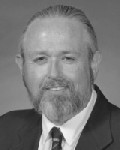Awardee Interviews | Biography: Robert A. Childs
Robert A. Childs

Bob Childs began his 30 year career at the Massachusetts Institute of Technology in 1969 as an electronic technician in the Instrumentation Lab (Draper Lab) after completing his term of service in the US Air Force. There he assembled and tested miniature gyros for guidance systems used' on Poseidon Missiles and the Apollo Moon Mission. He quickly transferred to the Center for Space Research (CSR) the following year to begin work on the Lunar Surface Experiment that was one of the successful experiments of the Apollo 17 Mission, the last manned Moon mission of the Apollo Program. This experiment was used to map the Lunar surface for minerals and water using the Lunar Rover and a transmitter deployed as an interferometer system to look deep into the Lunar crust. The three-year development program took the team to various glacier fields around the world to test the prototype packages in an electrical environment large enough to represent the electrical properties of the Moon. With the successful completion of the Apollo Program at MIT Bob was asked by a professor who had seen his work to transfer to a new project that the professor was collaborating on.
Starting first on loan from CSR to the Bitter National Magnet Lab, Bob got involved in the construction of the first of three major Tokamak Reactor Experiments that would last from 1971 to the present Alcator CMOD. After a year he transferred to full time to this project and soon began his career in vacuum technology. As an electronic technician, he was given the task of building the vacuum pump control system for Alcator A. Tokamak. This naturally required an understanding what vacuum is all about and how the various pumps operated. Thus began his OJT and with the help of numerous professors and engineers in the lab and a series of AVS short courses he was on his way to a ner career. As time went on the project grew and as new technicians. were added Bob was put in a supervisory roll and was promoted to full staff as the technical supervisor of the Alcator Vacuum Lab. With the success of Alcator A came Alcator C and a whole new level of sophistication in vacuum technology and control. Bob was very much in charge of the design and construction of the vacuum vessel and pumping system for Alcator C. This experiment made international news when it produced the first high density plasma to achieve the Lawson Criteria for density necessary for ignition of a fusion reactor. This would not be possible without the: clean UHV environment produced by the Alcator C vacuum system. The Alcator program has been and is today the leader in producing the low Z effective plasmas necessary for fusion research. Alcator CMOD continues in this lead as one of only two major fusion projects in operation in the US funded by the Department of Energy.
Besides the work for the Alcator program Bob has been consulted by various other departments around MIT on vacuum issues. In addition, he found time to get involved in the High School Outreach program of the Plasma Science and Fusion Center by building the plasma demo device used to teach the students about plasma science. Three years ago Bob's service were loaned to another project in the PSFC that got involved constructing the world's largest superconducting magnet for the ITER Central Solenoid Model Coil. This international project is part of the design phase of a world class Tokamak that would demonstrate production of power equivalent to a power plant for an average size city. To make this work it would have a superconducting magnet system larger than anything built at this time. To prove it is possible the four world partners decided to construct a demonstration solenoid that would test the materials and construction techniques necessary to build the ITER Tokamak. In order for the materials to become superconducting, they had to be wound before the heat treat process. This meant the coils would have to be reacted in a very large vacuum furnace. Wall Colmonoy, a company in Dayton, Ohio, had the facility and furnace that could be made large enough. With the addition of a state-of-the-art gas purging and data acquisition system designed and built by Bob, he and a technician spent the next two and a half years in Ohio performing the heat treatments one at a time. The twenty coils and one Japanese coil were successfully heat treated and for his dedication Bob was awarded a Certificate of Merit from the ITER Home Team. The Wall Comonoy Company even gave him a plaque to say how much they appreciated working with him.
Bob has been involved with the AVS for many years serving first on the Executive Committee of the Vacuum Technology Division as a Director and then Chair. From there he became the Chair of the Recommended Practices Committee and with the involvement of the RPC in ISO membership serves on the Technical Advisory Group for the ISO TC112 Vacuum Technology Standards Committee. He is the Vacuum Technology Delegate to IUVSTA and as such was elected the Vice Chairman of the Vacuum Science Division his first three years and now serves as Chairman for the next three years. He has served on numerous Program Committees for the National Symposium and Local Arrangement committees. He is on the Steering Committee for the AVS New England Chapter and has been an instructor for Vacuum Technology courses offered by the chapter.
As for non-work related activities, Bob has been involved with living history groups as a member of eight different units that reenact the American Revolution. He has done this for twenty five years and has traveled all over the world telling people about our struggle for independence and life in the 18th century.